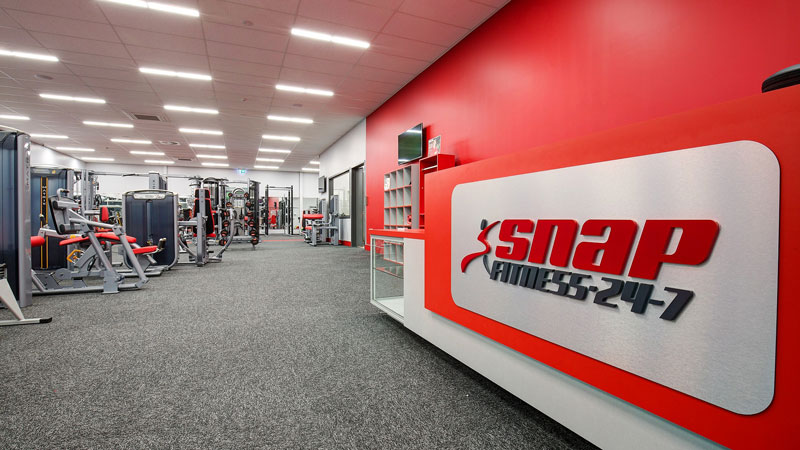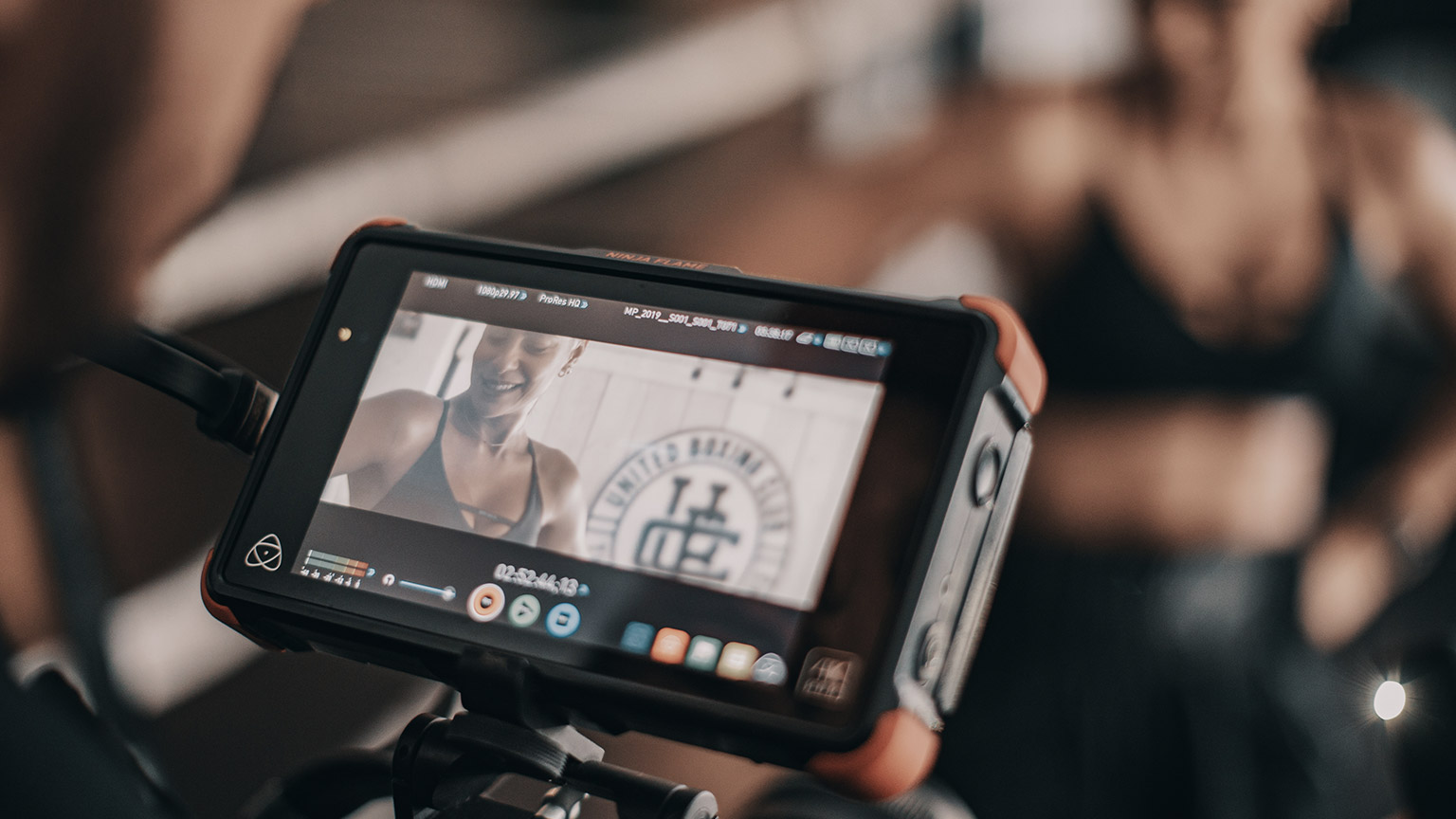Branding is a crucial aspect of marketing that helps businesses differentiate themselves from their competitors and establish a unique identity in the minds of their customers. In simple terms, branding is the process of creating a recognisable and memorable name, logo, design, or symbol that represents your business and its values.
In the fitness industry, branding is especially important because it can help you stand out from the numerous other trainers and gyms out there. To create a strong brand, you need to consider various elements such as your target audience, your unique selling proposition, and your overall image.
One important aspect of branding is consistency. This means that all of your marketing materials, from your website to your business cards, should have a cohesive look and feel that aligns with your brand's values and personality. Consistency is key in building trust and recognition with your customers.
Another key element of branding is storytelling. Your brand should tell a compelling story about who you are, what you stand for, and why you're passionate about helping people achieve their fitness goals. By sharing your personal journey, your values, and your mission, you can connect with potential clients on a deeper level and create a loyal following.
Ultimately, a strong brand can help you attract and retain clients, differentiate yourself from your competitors, and build a positive reputation in your industry. So, take the time to develop a brand that truly represents you and your business, and you'll be well on your way to success in the fitness industry.
Have a look at the following slide of images to view some very well-known brands that may resonate with you. What comes to mind when you think of these brands?
- Coca Cola
- Air New Zealand
- Sony PlayStation
- McDonald's
- Disney
When a business is building its brand, it should focus on attracting the right kind of customers who will benefit from its services. Your brand is basically what people think about when they hear your business's name - it's like a promise of what you offer and what you stand for. To build a strong brand, you need to make sure you're promoting it consistently and with high quality, so people can recognise your business at a glance and feel connected to it.
Here are a considerations required when developing your own brand:
- What will be the brand name?
- What will the logo look like?
- Will the brand have a slogan?
- Will the brand need a website?
- What are my advertising options for the brand?
- Should my brand be trademarked?
- What do I wish to convey to my target market?
Be mindful that a brand is a lot more than simply just the product you sell.
Characteristics of world-class brands
Here are the ten common characteristics of the world’s top brands.
- Excels at delivering the benefits which customer’s desire
- It stays relevant
- It's pricing strategy is based on consumer’s perceptions of value
- Is properly positioned in the marketplace
- It is consistent and remains so
- It's portfolio and hierarchy make sense
- It coordinates a full repertoire of marketing activities to build equity
- It's managers understand what the brand means to consumers
- It is given proper consumer support that is sustained for a long time
- The company monitors sources of equity (Keller, 2000)
Finding your own brand can be a challenging but rewarding process.
To start, consider what makes you unique and what sets you apart from others in your industry or field. Consider your values, strengths, passions, and expertise, and how they can be incorporated into your brand.
Conduct market research to better understand your target audience and what they seek in a brand. Use this information to develop a brand personality that resonates with your audience and aligns with your values.
Create a clear and concise message that communicates your brand's value proposition, and use it consistently across all your marketing channels.
Finally, be authentic and true to yourself throughout the branding process. Your brand should be a reflection of who you are and what you stand for, so don't be afraid to let your personality shine through. Remember that building a brand is an ongoing process, and it may take time to refine and evolve your brand over time.
Try it out
Create a brand that is unique to you!
The decisions you make about your brand are critical in shaping how consumers perceive your product or service. To attract the right customers, you need to make branding decisions that address the needs of your target market. This means that the choices you make for your brand should appeal to the clients you want to attract. Some branding considerations include the following:
- Name
- Logo
- Slogan
- Pictures
- Colours
- Fonts
- Information
The following image illustrates the familiar signage of Snap Fitness brand logo. Below the logo, it contains simple information that encourages the need to use the gym as it has flexible hours which suits many with busy lifestyles. What other things might you think of when you see the Snap Fitness logo? Quality? Easily accessible? Economical? These thoughts are not by accident! Snap Fitness have given themselves a fantastic reputation by building their brand to meet the needs of their clients.

Other competing gyms that have a similar offering of flexible hours and convenience include places such as Jetts and Anytime Fitness. After reading the names “Jetts” and ”Anytime Fitness”, did you associate these gyms with their brand? Did you visualise their logo or setup of their gym? If so, their marketing of their brands has connected with you as a consumer. You may, or may not find the brand and gym appealing.
What can be noted from the above observations is that strong brands forge lasting connections with customers based on brand meaning.
Try it out
Let's have a go at reflecting on how Les Mills branding may have impacted or influenced you as a consumer.
How has Les Mills marketing worked on you?
Let’s look a little deeper into ways to further engage our target market through branding.
When marketing your brand, it is crucial to consider:
Brand meaning
This refers to the beliefs and associations that consumers have about a brand, which businesses use to build brand loyalty. With the growing popularity of social networking and digital communication, brand meanings can spread rapidly through online sharing. To build on their brand meaning, business owners are turning to brand storytelling as an effective method to engage consumers and establish their identity. Marketers aim to create compelling stories that connect with consumers and reinforce the brand's identity.
One well-known personal trainer, Kayla Itsines, has built a successful brand by focusing on her target audience's needs and beliefs. Her brand meaning is centred around empowering women to feel confident and strong through fitness.
She achieved this by creating a workout programme that helps women achieve their fitness goals, sharing inspiring success stories on social media, and building a supportive community that encourages women to support each other.
By consistently reinforcing her brand meaning through her messaging and marketing, Kayla Itsines has developed a loyal following of women who resonate with her brand and its values.
Check out her website and take note of her brand.
Brand personality
Brand Personality, on the other hand, captures the distinctive image that represents the characteristics and benefits of a product or service. It closely relates to brand meaning and plays an essential role in developing the image and voice of a brand, supporting effective marketing efforts. By considering both brand meaning and personality, businesses can make informed decisions in developing their brand and appealing to their target market.
A personal trainer named Tony Horton has built a brand around his unique personality traits. His brand personality is energetic, positive, and motivational. He achieved this by creating a workout programme called P90X, which is known for its high-intensity workouts and challenging routines. Tony's energetic and motivational personality is reflected in the marketing of his programme through catchy slogans, bold graphics, and upbeat music. By consistently reinforcing his brand personality through his messaging and marketing, Tony Horton has created a brand that is closely associated with his unique personality traits, which has helped him stand out in a crowded market of personal trainers.
Check out his website and get a feel of the use of brand personality throughout.
Watch
Watch the following video where Personal Trainer Tash, talks about her brand and her considerations when designing her logo.
Marketing Methods

Here are some common marketing methods that businesses use to promote their products or services:
Social media marketing
Social media platforms such as Facebook, Instagram, and Twitter offer businesses a way to connect with their audience and promote their products or services through organic posts, paid advertising, and influencer partnerships.
Email marketing
Email marketing involves sending promotional emails to a list of subscribers who have opted in to receive communications from your business. This method can be highly effective for building relationships with customers and promoting sales or new products.
Content marketing
This involves creating and distributing valuable and relevant content to attract and engage a target audience. This content can include blog posts, videos, infographics, and more, and is designed to educate, entertain, or inspire the audience while promoting your brand.
Search engine optimisation (SEO)
SEO is the process of optimising your website and content to rank higher in search engine results pages. This can help increase visibility and attract more traffic to your website.
Promotions and incentives
Introductory offers, contests and giveaways, and other promotions that offer incentives to customers can be effective in attracting new customers and building brand awareness.
Product and service offerings
Upgrades and other variations of products or services can provide additional value to customers and increase revenue.
Social proof and reputation building
Customer reviews and testimonials can provide valuable feedback for businesses and build trust with potential customers. (McCormick, (2023)
Influencer marketing
Influencer marketing involves partnering with influencers who have a large following on social media or other platforms to promote your products or services. This method can be highly effective for reaching new audiences and building trust with potential customers. These are just a few of the many marketing methods that businesses can use to promote their products or services. The most effective method(s) will depend on the business's goals, target audience, and budget.
Watch
Try it out
Let's enhance your marketing efforts to generate even more leads.
Head over to the forum and share 3 marketing methods that you see yourself using to attract potential clients and describe why you have chosen these.
Don't be afraid to get creative with your strategies. Whether it's leveraging social media, creating engaging content, or networking with local businesses, there are many ways to generate leads and grow your business.
Remember, with hard work, dedication, and a solid marketing plan, you can attract the right clients and build a thriving personal training business.
Go ahead and share your marketing ideas with your other students!
Traditionally, businesses would try to reach a big audience through different mediums such as television advertising or advertising within movies, celebrity endorsements and so on. However, in more recent years, there has been a shift in how customers receive their information. Business owners are now choosing to reach their target audience in more interactive and engaging ways. For instance, through the wide array of online, mobile and social media platforms, they can create, inspire and share brand messages.
If you take Adidas for example, a renowned sportswear brand, they have now chosen to abandon television altogether, opting to use only digital channels to reach their targeted younger consumers as Adidas’ CEO has acknowledged that their younger consumers engage with their brand predominantly over mobile devices.

Social media pages such as Instagram and Facebook are among the most utilised to help promote a brand. The message and vision of the business must be well communicated to an audience in order to not cause a negative reaction from the target market, as a poor reputation online is known to go “viral”. Other online methods to authenticate the business and brand whilst further promoting it, is to create a website or a blog. These marketing mediums will help create an image, a reputation, build the brand and assist in promoting the services the business provides. Things such as discounts, information on training sessions, contact details and trading hours can be some of the inclusions to the business online and social media pages.
The use of online and/or social media presence for marketing the business brand is an effective way to promote what is on offer. Additionally, highly loyal customers can inadvertently promote the brand by sharing, tagging, linking and posting images to their personal social media pages. Advertising through social media takes a little bit of time, thinking and planning to ensure there is an active presence on the social media channels. Some of the considerations needed to be carefully planned out might include:
- What images should be used?
- Is the brand consistent throughout the content?
- What discounts could be applied and when?
- What is the preferred contact method to ensure all enquiries are attended to?
- How often should be posted?
- Are the messages promoted clearly to the ideal target audience?
- Are the services the business provides clear and well highlighted in the content?
- Will there be a theme for posts, for example, motivational posts, educational posts, monthly special posts or a particular colour scheme?
- Who are the influencers in your niche?
- What has been tried and tested already? Are there pitfalls you can avoid?
Once you have a grasp of the content you would like to use when promoting through social media, you can then research which of these marketing mediums will be pursued to better promote the business brand. After making a decision on which online or social media medium to use (it may be one, all or a combination of a few), it is time to get started. Click on each of the following to learn how to create a business page for Instagram, Facebook and also personalise your own website.
Please note, these are not the only providers for building a social media or online presence, further research can be conducted to see what other options and avenues the business would prefer to take.
See the following website from NASM, to learn how to get started when marketing your personal training business online.
Online personal training: learn how to build your business
Keep in mind, while social media is a fantastic tool that can be used for marketing, you shouldn't rely solely on this. Be sure that the marketing methods used suit your target audience. Be open to using more than one appropriate method for your business.
It's time to share some inspiration and give a shoutout to the fitness professionals who motivate and engage us online.
Watch
In the following video Personal Trainer Tash discusses her target market and which methods she uses to generate clients.
Try it out
Head over to the forum and name someone in the fitness world who you follow and explain why you admire them.
Maybe they have a killer workout routine, or they share valuable fitness tips that have helped you achieve your goals. Perhaps they have a charismatic personality that keeps you engaged and motivated. Whatever the reason, be sure to share what they do well and how they inspire you to live a healthier and more active lifestyle.
By recognising and celebrating the individuals who have made a positive impact on our fitness journeys, we can spread positivity and inspire others to achieve their own fitness goals. Share your fitness role models with your fellow peers, and let's continue to motivate and support each other by dropping a like or by commenting on other students' forum posts!
Starting a new business takes time, and a fitness business is no different. It may start off slow with only a few clients, and typically, the gym may only provide a small percentage of those clients. As an exercise professional, making sales is a crucial part of your role, and it requires different skills from generating leads. We will learn about both these skills.
Making sales involves closing sales and converting leads into income. Sales and marketing skills are just as important as other key skills you have learned in this course, such as exercise plans and prescription. When selling, it's important to remain positive and enthusiastic even in tough circumstances. Avoid showing worry about making a sale because this may affect how your clients perceive you.
Generating leads
Generating leads means finding potential clients who might be interested in your services and starting a conversation with them. Generating leads can be a challenge. This can be done through various marketing methods and strategies, such as advertising on social media, offering promotions, or creating informative content to attract their attention. The ultimate goal is to get their contact information so you can continue to communicate with them and eventually close a sale. Methods that may increase the chances of generating a lead include:
Word of mouth

Word of mouth is a form of communication where people share their experiences and opinions about a product or service with others. It can be both positive or negative and can have a significant impact on the reputation and success of a business. It is considered a powerful marketing tool because it is often perceived as a trustworthy source of information.
Members can inform others of current services and can encourage friends, family and even other gym members to partake in personal training, team training sessions. Having a social area at the gym such as a lounge area can help in sparking up these conversations amongst existing members.
New gym members
When new members join the gym, they might get offered a free personal training session or gym induction. This is a great opportunity for you as an exercise professional to introduce yourself and explain how you can help them reach their fitness goals. By doing this, you're making them aware of your presence and building a connection with them, which can make them more comfortable in the gym. When they're comfortable and attend the gym regularly, your chances of converting them into a paying
Floor walking
Staff-to-member is another approach that can be taken to generate leads and it is essential to build many professional rapports with members, particularly for new trainers to the industry. Floor Walking is a term used to quite literally, walk the floor, and approach members directly.
Survey system
When walking the floor, try the Survey system. This is a trick of the trade, where rather than just randomly approaching members on the floor offering free sessions, which can be awkward and be perceived as slightly desperate, the survey system gives a clear purpose. Here is how this method can be used. Have a clipboard, lots of surveys and a pen. Approach a member and advise them that you are conducting a survey on behalf of the gym and it will only take two minutes. Let them know that they could win a 6-pack of PT sessions valued at over $300. Ask the following questions:
- What was your main goal when you first joined the gym?
- Have you achieved this goal yet?
- If not, why do you think you have not?
Follow up later advising them if they have won the grand prize, if not let them know they have won a consultation prize of one free session. And just like that, you have managed to break the ice and commence building a rapport with the member and also one step closer to finalising a sale by giving them a teaser of your services.
Potential clients can reach out to you in many ways, such as through email, face-to-face meetings, or even casual conversations in the gym lounge. However, the most common way for clients to contact you for the first time is over the phone. When this happens, it's important to make a good impression that will last. To do this, always answer the phone in a professional manner. Keep in mind that you're not just selling your services, but you're also selling yourself. You want clients to feel comfortable and trust you with their business. The following table is a guide that can help you understand which behaviors can make a positive or negative impression when using the telephone.
| A POSITIVE IMPRESSION | A NEGATIVE IMPRESSION |
|---|---|
| It is important to always answer the phone promptly to avoid appearing too busy for an enquiry. | Do not answer the phone if you are with another client. Ensure you have a voicemail enabled so the client can leave a message. Make sure to respond to the voicemail as soon as you are available and free. |
| Physically smile while talking, believe it or not, a smile on your face during a call can be heard on the other end by the client and reflects positively when serving the customer. | It is considered rude to eat, drink, smoke or chew gum when talking to a client in person, and it is not much different when doing these things on the phone. They can be heard through the conversation and can be visualised by the client which can be very distracting when they are making an enquiry. |
| Always be polite. Use your manners, introduce yourself on the phone, thank them for their call, and do not make them feel rushed to get off by speaking at a comfortable pace. Make sure their enquiry is attended to. | The tone of your voice must never sound tired, unhappy, or bored. They will need to feel your positive and enthusiastic energy over the telephone just as much as they would when you are with them in person. |
| Have a pen and paper ready in case you need to note any information down. This will show you make a habit of being organised and prepared for them and their enquiry. | Do not use slang words and casual expressions as they may be misinterpreted and seen as unprofessional. These must be avoided with any communications but even more so on the telephone, as this is often their first impression of you. Avoid overly technical jargon in an effort to not lose the client before you gain their trust and understanding. |
|
Having a professional voicemail is important to allow the client to leave a message, their return number and enquiry. Your voicemail message should be professional, informative, clear and helpful. The client should easily identify what business they have called with the message explaining that you are currently busy training clients, and will contact them back within a certain amount of time. Make sure you keep that promise and call them. |
Stay focused on the purpose of their call, do not give them irrelevant or inaccurate information and answer all their questions so they are well informed before entering the gym. |
| Be prepared with a diary in case they are making a booking with you, that way you can see your availability and lock them in at a time that is suitable to both parties. | Avoid sounding flustered and having to walk away from the telephone to collect what you need to take their details. |
Typically, in a gym, the sale process can be categorised into 5 simple steps.
Qualify the enquiry
This means to make sure the client is willing and able to go ahead with a training session with you. Qualifying the enquiry can occur from the first initial contact the client has with you.
Some examples of some pre-qualifying questions could be:
- How did you hear about me?
- Do you currently workout?
- Where do you workout?
- What are you trying to achieve by working out?
- Do you have any medical conditions that might prevent you from working out?
- My current rate for one-on-one sessions is $60 per session. Does that work for you?
Book the client in

Once the prospective client qualifies, the next objective is to schedule a free introductory consultation. Discuss how long the booking will be for and what the introductory consultation includes. Be clear as often clients may confuse this and expect to have a free work out at this booking. Check your availability in your calendar/diary and see if the client would like to commit to a time for their introductory consultation.
Perform an introductory consultation
When a prospective client comes in for their free introductory consultation, it's important to be prepared and presentable. Make sure you have all the necessary paperwork ready and greet them with a smile in a professional manner. Find an open area where you can sit down and have the consultation, such as the gym's lounge. Avoid using a private office as it may make the client feel uneasy or intimidated. During the consultation, the goal is to break the ice and build rapport with the client by engaging in small talk. This will help establish trust and make the client feel more comfortable. Once you've built a connection, you can then pitch your personal training services. The following points explain how to have an effective small talk conversation.
The following lists effective ways of having small talk with your clients, before you start selling your services.
- Avoid getting straight to the paperwork, instead, establish rapport with the clients first with the use of the warm and welcoming conversation. Get to know your client, ask about their hobbies, work, and family, what they enjoy and how they are. Aside from building trust, this can also enable you to understand their training needs.
- A little preparation and a touch of confidence are all you need to make the introductory conversation less nerve-racking. Read your notes made from your initial conversation on the phone from your pre-qualifying questions to help you prepare. Keep small chat to a minimum, you do not want to stray off the purpose of the meeting.
- One rule of thumb when speaking with your clients is to never talk about other client's personal lives or habits. Filling out paperwork is a dull activity so try to liven it up by showing some personality.
- Finally, a classic mistake made during the interview with a personal trainer is to talk too much and give too much information. Remember, although you have the knowledge of what is best recommended for your client, they only need to know what they need to do to meet their goals. Aim to follow the 80/20 rule of active listening, spending 80% of the time listening and 20% of the time talking, using open-ended questions to navigate the conversation.
Start selling
So, you've had a great small talk conversation during the introductory consultation with your prospective client. Now, how do you transition to selling your personal training services? Well, first you need to use the information you've gathered during the consultation to tailor your sales pitch to the client's specific needs. You now know what they want to achieve, their lifestyle patterns, availability, personal commitments, and any work/life pressures they may have. This is the perfect opportunity to explain how your services can help them reach their goals.
It's important to make sure your sales pitch is personalised to the client's needs. For example, if a client's goal is to gain muscle, there's no point in telling them how great you are at training marathon runners. Instead, focus on how you can help them gain muscle in a way that fits their lifestyle and schedule. By doing this, you'll show them that you understand their needs and that you're the right person to help them achieve their fitness goals.
A common error that most exercise professionals make when they start selling their services is that they lose focus on what they are selling and steer towards explaining their services features rather than the benefits.
Let’s look closer at the differences between the 2.
Features are product/service characteristics that deliver benefits; we buy products for their benefits.
Features may include: exercise testing, instruction, programming and planning, nutritional guidance, personal support, safe exercise, effective exercise, exercise adherence, results, clarity of purpose and progress, personal attention and empathy, entertainment.
Benefits may include: physical changes (clothes fitting, being able to play a sport again, less pain, less fatigue), psychological changes (feelings of happiness, control, satisfaction, awareness, reduction in frustration and boredom.)
Overcoming objections
As a fitness instructor, you're likely to face objections from potential clients. But objections don't have to be roadblocks. In fact, they can be opportunities to showcase your expertise and address any concerns.
To overcome objections, start by actively listening to the client and acknowledging their concerns. For example, if a client is hesitant to commit to a long-term package, you might say something like, "I completely understand where you're coming from. Committing to a long-term package can be a big decision. Let's talk about how we can make it work for you."
Next, offer a solution that addresses their objection. If cost is a concern, you might offer a payment plan or suggest a package deal that fits their budget. Or if they're worried about not having enough time, you might suggest shorter, more efficient workouts.
Remember to showcase your expertise and experience as well. Share success stories from past clients, or explain how your unique approach can help them achieve their fitness goals.
Finally, be confident in yourself and your services. If you truly believe in the value of what you offer, that confidence will come through and help overcome any objections.
If you can master overcoming objections, you are one step closer successfully closing more sales.
Close the sale
Closing a sale as a personal trainer is simple. You just need to ask a closed-ended question like, "Ready to secure your first training session?" Don't be afraid to ask! It's not pushy, and your client expects you to take the lead. And always remember to thank them for their time and for choosing you as their trainer.
To get to this point, you'll need to build a good relationship with your client. Start by explaining your services and how they can benefit. Encourage them to ask questions and address any concerns they might have. If there are objections, offer a solution that benefits them. And when you feel the time is right, ask if they're interested in booking their first session. Be confident and direct!
It's also important to practice your sales techniques and analyse what works. Consider offering a free session to start with, as it's better to have one free session that leads to a client than no client at all. And most importantly, believe in what you're selling! Your passion and confidence will be contagious and will help you close more sales.
Here's a more detailed explanation of some common closing techniques that you can use to encourage your client to make a decision and close the sale:
Creating urgency
One effective way to close a sale is to create a sense of urgency or scarcity. This might involve highlighting the limited availability of your services or emphasising a special offer that is only available for a limited time. By creating a sense of urgency, you can encourage the client to make a decision and move forward with their purchase.
Offering incentives
Another way to close a sale is to offer incentives or bonuses that make your services more appealing to the client. This might include offering a discount on your services or throwing in additional services or perks at no extra cost. By offering these incentives, you can help the client see the value in your services and encourage them to make a purchase.
Assumptive close technique
This technique involves phrasing questions or statements in a way that assumes the customer has already made the decision to make the purchase. For example, you might say something like "When would you like to schedule your first training session?" or "Which package would you like to purchase today?" By assuming that the sale has already been made, you can nudge the client towards closing the sale and reinforce their decision to work with you.
It's important to note that while these techniques can be effective, they should be used ethically and responsibly. The focus should always be on providing the client with the best possible service and helping them achieve their goals, rather than simply making a sale. By building a strong relationship with the client, understanding their needs, and providing them with clear value, you can increase the likelihood of closing a sale without relying solely on sales tactics.
Watch Ben explain the technique, obtain, train and retain that he recommends when working as a personal trainer.
Have a look at the following video, where Paul Jennings summarises the 5 simple steps of the sales process and explains how to convert a lead into a client.
